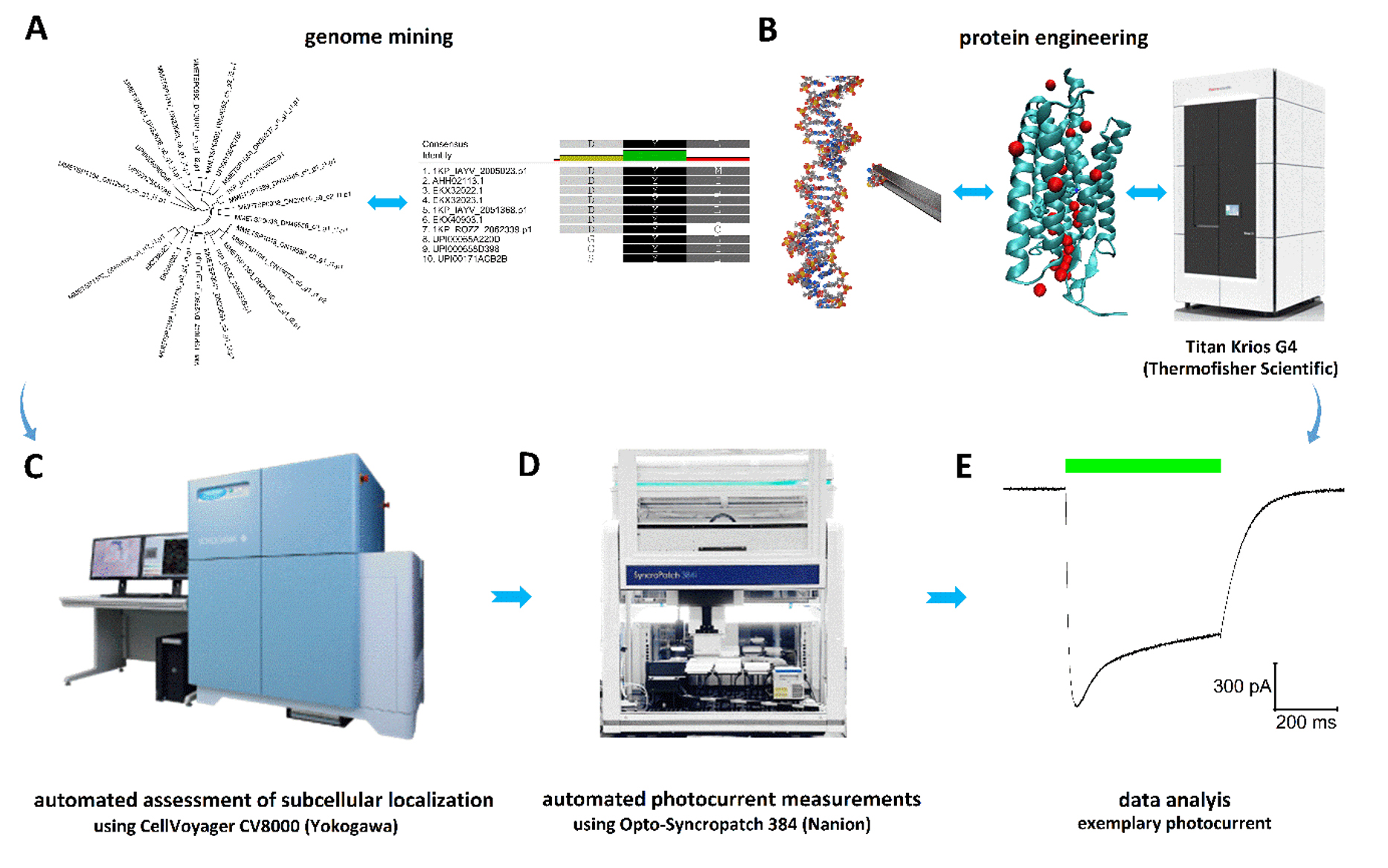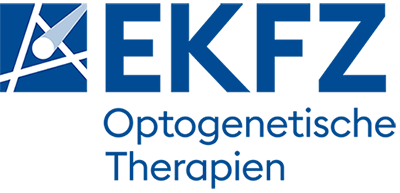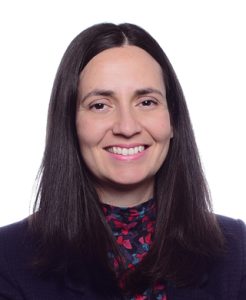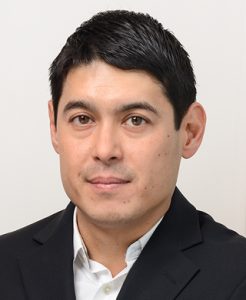Optogenetic
Actuators
The opsin engineering platform will combine genome mining and protein engineering with automated plasma membrane expression screenings and automated photocurrent measurements to develop optogenetic actuators (Channelrhodopsins, ChRs) for the proposed optogenetic therapies. The substantial dataset collected under standardized conditions will furthermore expedite opsin fitness landscape mapping and serve as a foundation for data-driven protein engineering approaches, which will complement structure-guided approaches, thereby accelerating the advancement of the next generation of optogenetic actuators.

Figure: Opsin Engineering Platform (P1). Figure: Opsin engineering platform (P1). In close collaboration with all Light2Treet Platforms and Light2Treet Teams, the opsin engineering platform (P1) will engineer improved ChRs to combine maximal efficacy with minimal risk of adverse effects. We will generate opsins with a red-shifted action spectrum, plasma membrane localization, hypoimmunogenicity and suitable kinetics. (A-B) P1 will employ genome mining and protein engineering to develop next generation optogenetic actuators for future optogenetic therapies. Shown are ClustalW alignments and a phylogenetic tree used to identify new natural ChRs (A) and the high resolution structure of a ChR (ChR2 structure, PDB ID: 6EID) used to identify amino acid likely to improve the properties. We will employ 3D models (AlphaFold, DeepMind) and cryo-EM analysis (Titan Krios G4, cryo-EM platform of the University of Göttingen) to gather structural information in cases where high resolution structures are not yet available (B). (C-D) The application of automated procedures enables large scale screenings of libraries comprising natural opsins and opsin mutants. The established pipeline consists of the spinning-disk-microscopy based CellVoyager CV8000 (Yokogawa), which is used for automated opsin plasma membrane expression screenings (C), and the Opto-SyncroPatch 384 (Nanion) for automated photocurrent measurements (D), to analyze ChR properties. (E) Exemplary ChReef photocurrent, measured on the Opto-SyncroPatch 384.



